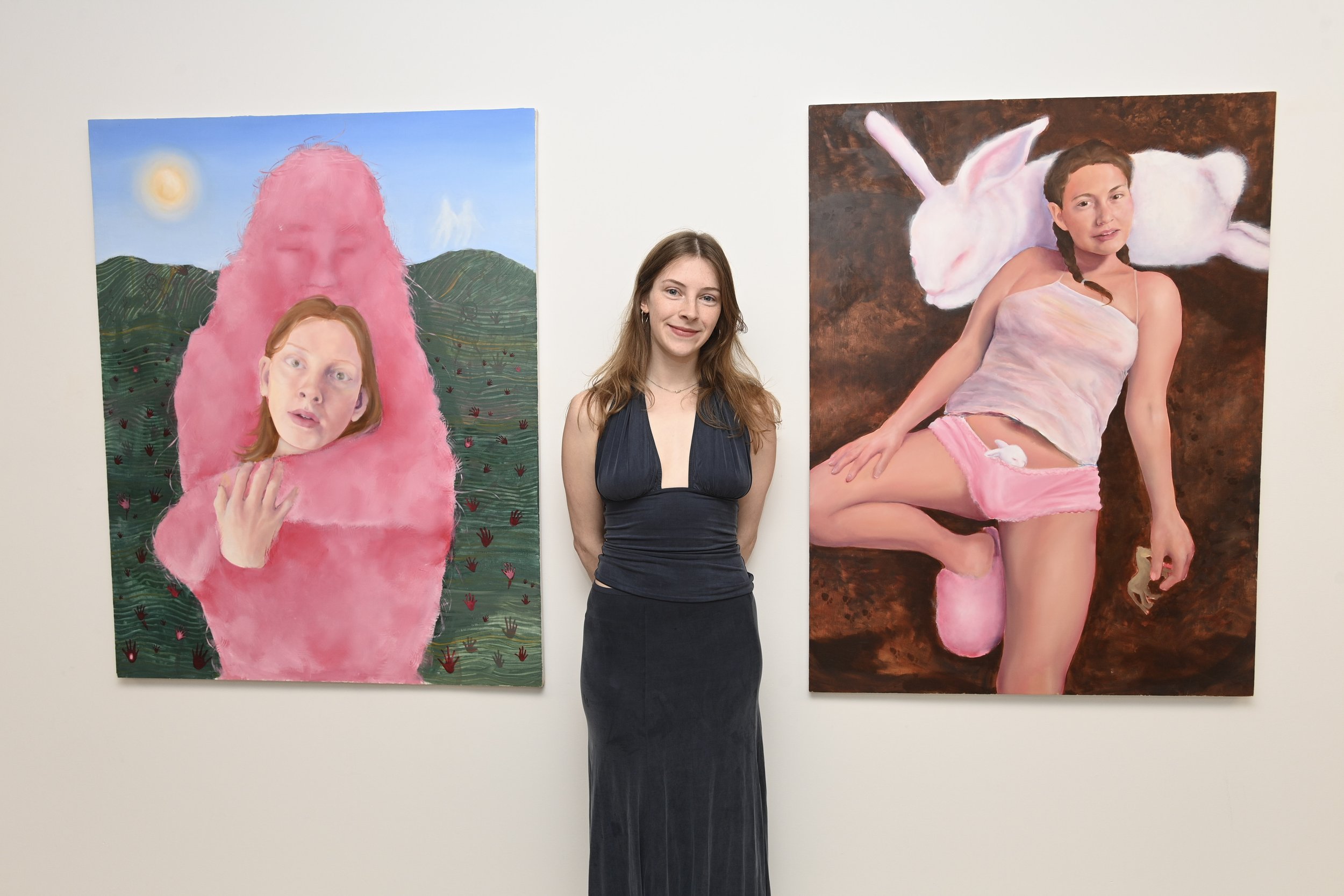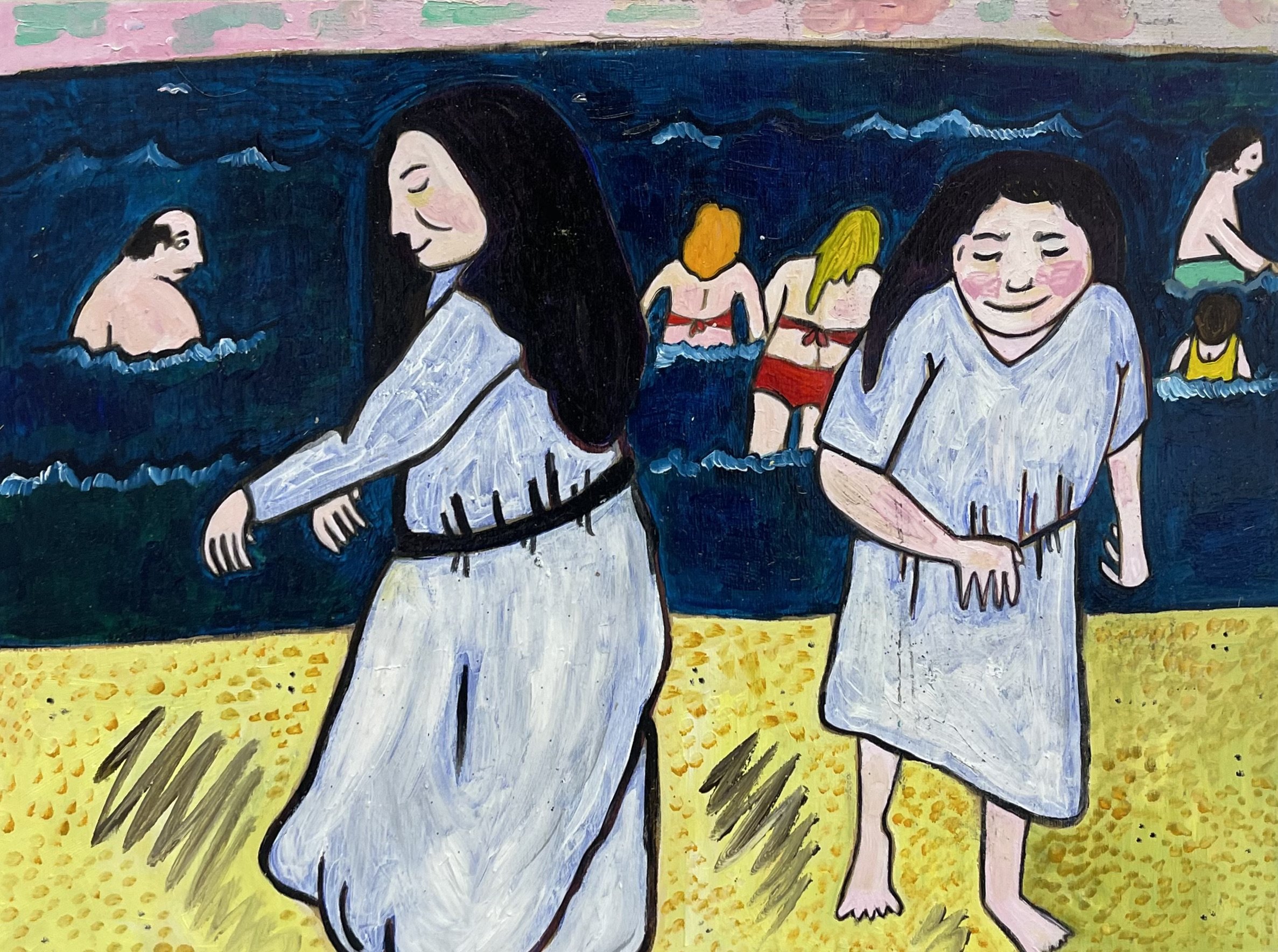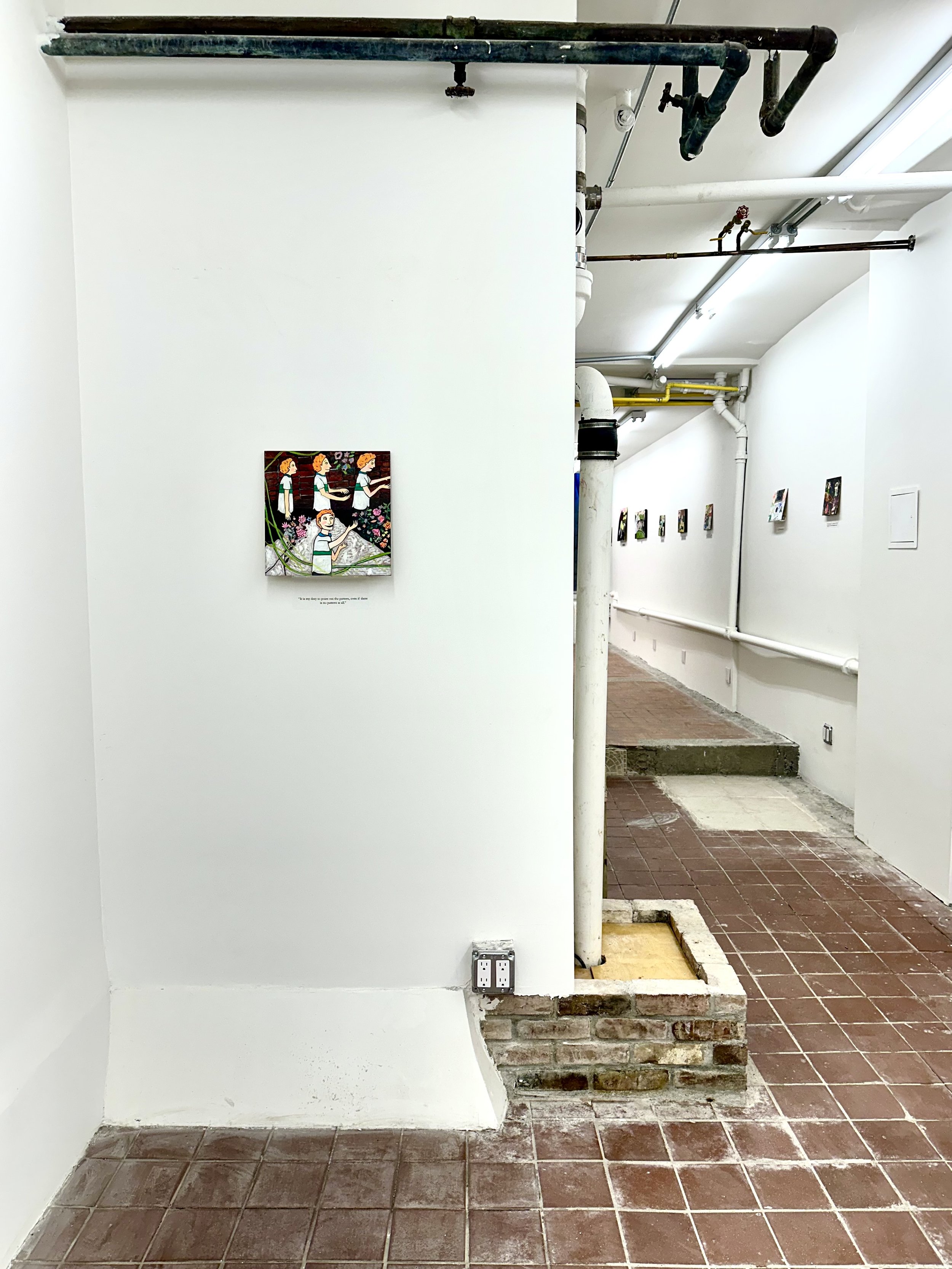
Between Women: Female Desire in Josie Girand’s “The Trick”
Josie Girand’s debut solo exhibition The Trick–on view at Galerie Shibumi through January 5th–features large, expressive portraits of her close female friends. Though the exhibition contains smaller pieces too, these bigger works (the show features eleven of them) seem to form the cornerstone of Girand’s style and situate her as a painter who explores the imbrication of sexual and social desire in female friendship. Girand’s subjects appear in self-contained worlds that operate with their own axes of time and space; in Miss Blue (2024), for example, a veiled figure reclines on a sandy knoll beneath a yawning, sedimentary sky. Her bridal accoutrements and red shoes suggest her participation in a cryptic ritual that is neither a wedding nor a prom, but rather a hybrid of these rites of passage. Even though the image possesses a wealth of hyper-realistic detail, there is little about it that resembles reality. As in many of Girand’s works, light and shadow do not behave in the way we would expect, and the relationship between the subject, the background, and her viewer is ambiguous.

Liz scheer’s nocturama
Entering Liz Scheer’s solo exhibition, Nocturama, immerses the viewer in a two-floor experience featuring over 50 intricate works. Rather than relying on grand scale to captivate, Scheer’s pieces invite the viewer to slow down and delve into the layers of narrative woven into each composition.
At first glance, the artist's paintings appear playful and light-hearted, filled with vibrant colors and a range of textures from glitter to animal fur. However, Scheer’s world has an undercurrent that tempers its initial cheer, beckoning viewers to look beyond the surface as a more haunting energy subtly emerges.
Each painting is paired with text that isn’t so much an explanation as an extension of the artwork itself. These cryptic, open-ended, poetic statements urge us to pause again, offering clues without closure. They present like lonely answers to an ad-lib. Rather than a paragraph to nestle within, the ambiguous text is forced to exist alongside a stark visual image.
Each piece in Nocturama stands as its own world, with narratives open to personal interpretation. The beauty lies in the ambiguity—no single, “correct” interpretation exists. Scheer’s truth remains her own, layered within the work and inaccessible without unraveling it entirely. Instead, we bring our own truths to the surface, projecting our interpretations onto the paintings’ vibrant textures.
Scheer invites us to release the urge to solve the work and instead embrace the unknown. We’re free to derive meaning as we please, or simply wander from piece to piece, savoring the infinite possibilities each painting holds. To me, this open-ended engagement is far more satisfying, even when a work’s dark humor might question my own sanity. The result is an experience of wonder that lingers long after leaving the gallery.

Liz scheer’s nocturama
"Meditations in the Mundane: Finding Meaning in the Everyday in Liz Scheer’s Nocturama”
